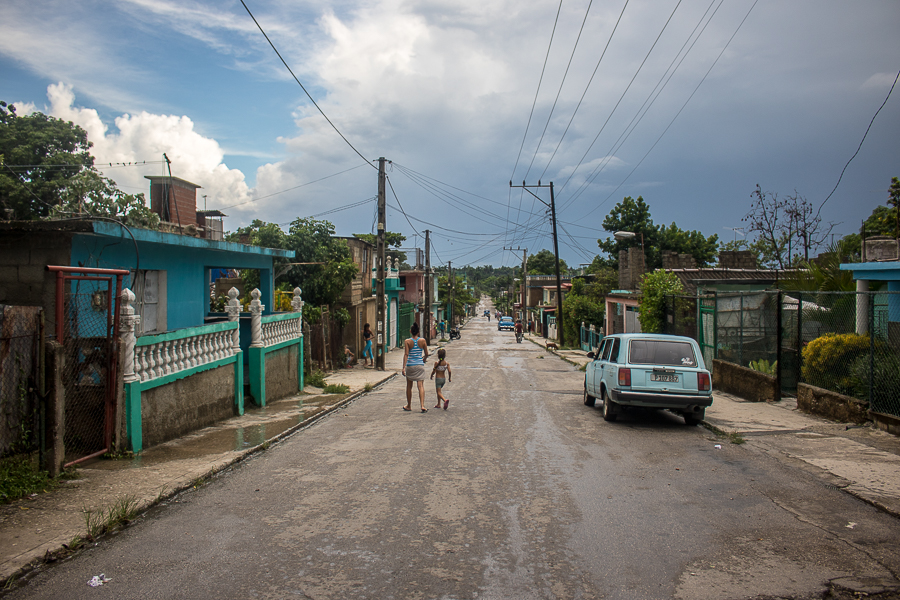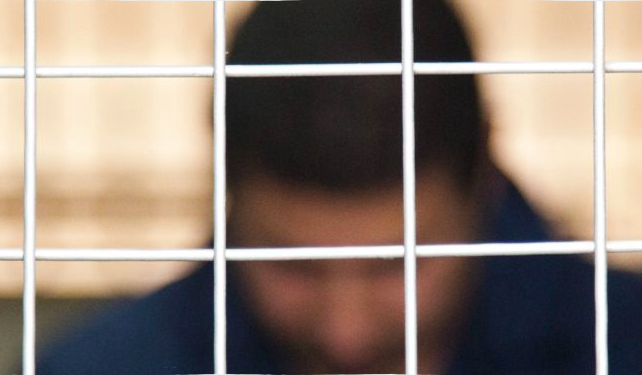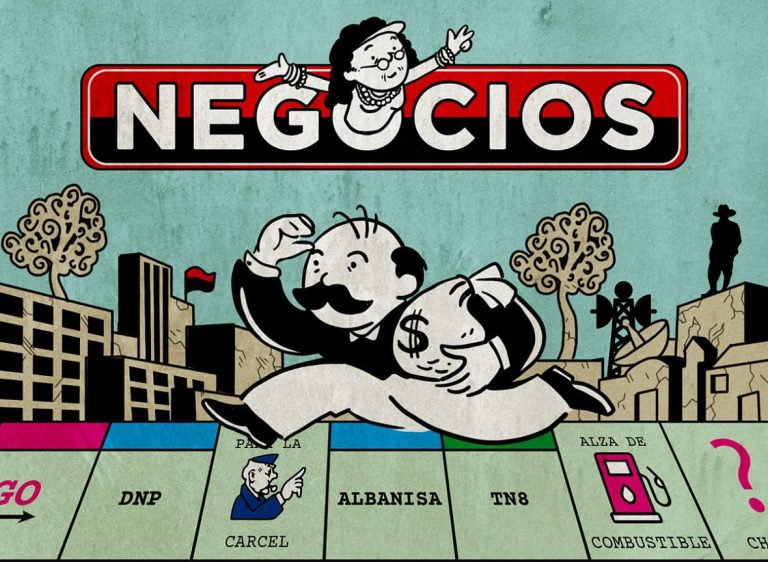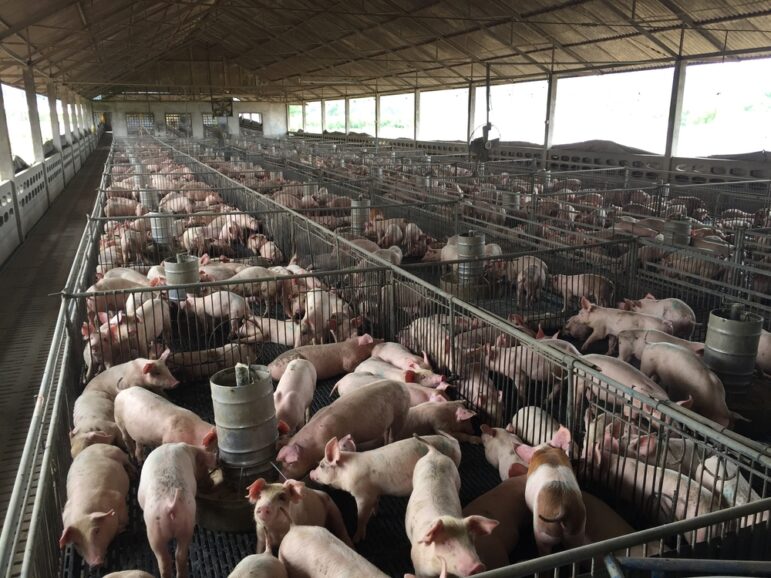

Photo: Mari B. Robles López / Center for Investigative Journalism (CPI)
Editor’s Pick of 2019: Eight Investigative Stories in Spanish
Ever since I joined GIJN as Spanish editor last March, I have been thinking about what it takes to make a good investigative story. I get daily alerts with “the latest,” “the exclusive,” the “greatest” journalistic investigations from Spain and all over Latin America — plus some from the US or European outlets that are translated or are actually done in Spanish.
I click on most, and skim through. But I don’t have time to read them all, so I focus on those I consider the most relevant. Or the ones that really grab me as a reader. In that process, I have been noticing that many stories have all the data and facts right, but fail in their storytelling. Sadly, I have also discovered that many pieces labelled as “investigations” are not actually exposing wrongdoing or abuse, or discovering what is not already known.
My only conclusion is that doing investigative stories is extremely difficult, for many reasons, and that it’s almost a miracle when it comes out absolutely right.
Because of this, instead of recommending “the best” stories of the year, I decided to try a different approach with my 2019 selection.
I have chosen the ones that I believe have focused on the right issues or areas, reflecting that they are in tune with what is happening politically, economically, socially, and culturally in Latin America and Spain. They are also stories from which I learned key lessons in investigative journalism; pieces or series that have made me reflect on what it is we are doing, how we are doing it, or perhaps what we should be doing as muckrakers in today’s complex and adverse information ecosystem.
Impact: It’s hard work, not magic.
You all probably saw the pictures. Thousands of people took to the streets protesting against the governor of Puerto Rico, Ricardo Rosselló, after journalists revealed the transcript of a chat where he and close associates made sexist and racist comments about other people, including stars like Ricky Martin.
But that was just the beginning of the story. The Puerto Rican Center for Investigative Journalism (known by its Spanish acronym CPI) had already been reporting on the scheme of corruption inside the government. The chat only offered more information about what was going on. As soon as they realized this, these reporters ratcheted up their investigation. Talking with more than 20 sources with direct knowledge of the ongoing corruption, they reviewed documents and databases of contracts and corporate records, and exposed it before the momentum was lost.
And they didn’t relax after the story came out. They kept reporting, letting others republish their stories (in both Spanish and English), sharing their findings with local and foreign media in different formats, talking to radio and TV and actively promoting it on social media. This non-stop activity was crucial to achieve something all investigative journalists hope for: impact.
CPI’s team is small and it was exhausting for them. They knew Puerto Ricans were upset with the government for many reasons (see their previous investigation on Hurricane Maria’s deaths) but it was this exposé that finally led to Rosello’s resignation, proving that when journalism is in tune with people’s concerns, it can have repercussions. Days after the story broke, CPI received an unprecedented amount of donations and appreciation messages from Puerto Ricans for their hard work.
The best revelation: when the alleged abuser actually answers questions.

Rossana Paz told her story to Nómada. Photo: Sandra Sebastián
#MeToo campaigns and important stories on sexual abuse have kept coming out of Latin America, becoming the subject of heated discussions among journalists and activists. The difficulty for reporters used to investigating in the public rather than the private realm is finding “proof” of that abuse, especially if there are no reports to the authorities, if victims don’t want to go on the record, if the violence is not physical but emotional, or if it happened years ago. In many cases, the accused provides a short statement, denying everything or declining to comment. Sometimes this results in backlash against victims, with readers left unsure of what is actually true.
When I read the story (also in English here) about the conductor of the Guatemala City Youth Orchestra, Bruno Campo, I was impressed by how reporter Pía Flores, from the independent outlet Nomada, did this story.
Four women contacted Nómada about Campo’s abuse. But that was only the starting point of the investigation. Flores continued reporting and found other victims. Four out of seven were willing to go on the record. The reporter also found other witnesses, and ended up interviewing 22 sources. She also used documents and emails to support the claims, and found complaints from parents and teachers who also questioned his abusive and violent training methods with kids.
Most importantly, Flores found out that the city’s authorities knew about the complaints against him. They not only didn’t do anything about it, but actually helped Campo with a scholarship so he could pursue his musical career in Europe.
This story achieves something else that is crucial when doing these kind of profiles: It allowed room for Campo to respond to accusations, and by doing so, revealed much more about his personality.
After the story was published, other four women came forward with new accusations. The General Attorney’s Office is currently investigating the case.
Investigating breaking news and violent events, the only antidote against lies.

Video footage from Noticias Uno used by Bellingcat.
There is an increasing need to investigate swiftly, particularly when violence and protests erupt in the streets. We have seen protests and clashes in many countries this year: Venezuela, Chile, Ecuador, Bolivia, Spain, and a general strike and protests are on the way in Colombia, as I write this piece. But how are we covering them? I wish reporters would train and invest in forensic visual investigative tools and techniques to cut through all the lies and fake news on these events, which are being used by political actors to advance their own agendas.
One good example of why these types of investigations are necessary is what happened on February 23, 2019, when a convoy of trucks with food and medicine caught fire over a bridge that connects Colombia and Venezuela, while protesters and security forces clashed. The Venezuelan government immediately blamed the opposition protesters for the disaster. The opposition and their allies, including top US officials and politicians in Colombia, blamed Maduro’s government security guards. That afternoon there was an information-misinformation war playing out on social media. As I read different versions I kept wondering: Who actually set the trucks on fire?
Bellingcat and The New York Times investigated it separately, using videos and pictures from several journalists, agencies, social media, and CCTV cameras; laid out a strict chronology of events; and then analyzed how it had all developed. It was most likely an accident, not a conspiratorial evil plan to burn food and medicines orchestrated by one side or the other.
I recommend reading both investigations — here’s Bellingcat in Spanish and English and The New York Times in Spanish and English — to see how each publication presents the facts and the conclusions they reached. Bellingcat focused on other areas close to the bridge where there was also trouble that day. They have been doing this kind of very important work with other breaking news stories this year, including with the car bomb in Bogotá, Colombia and the armed militias that have attacked protesters in Nicaragua.
The one skill you can’t forget: old-fashioned shoe-leather reporting

Calle Villalobo, San Miguel del Padrón, Cuba. Photo: Ismario Rodríguez / Periodismo De Barrio
Monica Baró, a Cuban independent journalist, spent almost two years reporting on how an entire community was poisoned with lead, and the consequences for its health many years later.
In any other country, this might have been a data-driven investigation. But data journalism in Cuba is almost non-existent. There is no culture of transparency and no such thing as FOIA requests to get those spreadsheets full of statistics. Most Cuban journalists don’t have internet connections at home or at the office, and only the very brave attempt data scraping from the bench at a local park. Trying to get official information from institutions or those responsible for certain areas to answer emails or take a phone call is very difficult. In fact, if you are not officially recognized as a journalist (and those who are independent like Baró are not), no one will answer questions. Not even off the record.
So how did Baró do this story? The traditional way: walking the streets of the community, knocking on doors, spending time in peoples’ homes, listening to their complaints and ailments, getting from them the few documents they kept — doctor’s prescriptions and evaluations.
She also spoke to experts from the scientific and medical academic community (bear in mind that health in Cuba is the government’s crown jewel and questioning medical issues can be considered an offense, to put it lightly) and reviewed reports from other countries in order to understand what lead does to human bodies.
It took her almost a year and a half to document the cases, three months to write the story, and more than six months for her editor and colleagues at Periodismo de Barrio to fact-check it. The result is a very well-written narrative piece. For my taste it’s a bit too long (they could have cut some parts out) but if you have 86 minutes to spare, go for it. The story won the Gabo Award for best-written piece this year.
A mirror site and a reggaeton animated video: different approaches to storytelling
Mujeres en la vitrina is a story about Venezuelan women who are victims of sex trafficking in Mexico, a phenomenon on the rise as the economic, social, and political crises in Venezuela continue to worsen. The story focuses on one of the most negative aspects of migration, which most countries in Latin America — but also Spain — don’t know how to deal with.
It all started with the news that the body of Kenny Finol, an escort from Maracaibo, had been found with multiple wounds (acid thrown on her beautiful face) on the streets of Mexico City. Her killer was a man involved in organized crime from the dangerous Tepito district.
It wasn’t an isolated case: Venezuelan escorts had been murdered or were disappearing in Mexico for some time. Reporters in both countries teamed up to document and try to understand how the sex trafficking network was operating and how women were at risk. They interviewed some who managed to break free, spoke to NGOs and other experts, and wrote stories on those who had been assassinated or had vanished.
But how were they going to present this information to readers? It often seems journalism is losing the competition for attention from audiences more interested in Netflix series than difficult stories. More importantly, how could they make sure other women, potentially at risk, read about this issue? How could they alert them?
The journalists created a mirror site of Zona Divas, the original site where these women advertised their services, and which had been shut down by Mexican authorities. Using the same aesthetics as the original site, the mirror site presents stories of victims as well as reporting on the perpetrators. You can also watch a mini-documentary, view graphics and maps, and even watch an animated video set to a reggaeton song that tells the tragic story of Kenny Finol. This project won the Gabo Award for innovation.
Finding the connections: what transnational collaborative investigation is all about

Transnacionales de la Fe. Screenshot
In the past year I have read several stories in Latin America that present a panoramic view of an issue. They are great collaborative projects that focus on health, the environment, the banking system, abortion, etc. These stories are important, providing a necessary comparative perspective for what is happening in the region. But most don’t achieve something that is crucial for a transnational investigation: exposing the key connections that tell the same intricate story.
Transnacionales de la Fe, or Faith Transnationals, does it well. It finds out what is behind an important political trend in the region: The parties and politicians tied to evangelical groups have been growing, becoming powerful electoral machines in many countries. Are they working together? Or are they an isolated phenomenon in each country?
This investigation shows some of those connections but more importantly it shows how a group of fundamentalist evangelical leaders in the US (supported by the White House) have been making deals with key political figures who are also facing questions around corruption, such as presidents Daniel Ortega in Nicaragua, Jimmy Morales in Guatemala, and Juan Orlando Hernández in Honduras. Representatives of one of these influential religious groups, Capitol Ministries, for example, have also been participating in important political local meetings and supporting the campaigns of certain candidates, such as Jair Bolsonaro, before he became president of Brazil.
This investigation was a huge collaborative effort, led by Columbia Journalism Investigations, the Latin American Center for Investigative Journalism, and 15 investigative media across the region, most of them small independent outlets. You can read the introductory piece, with main highlights across the region, in English.
The humans (and the long-term approach) behind environmental investigations

Mar Menor. Image from Sentinel-2 satellite on 13/09/2019. Credit: COPERNICUS / Datadista
For the general public, reading about coral reefs dying or forests turning into deserts, or a species they have never heard of that is going extinct, is just not very appealing. People prefer stories on other people. Greta Thunrberg, for example. Stories about her — the 16-year-old trying to save the planet — have been extremely successful in putting climate change and environmental issues on the global agenda.
But where are the stories on the people who are causing the most environmental damage?
An investigation by Datadista in partnership with Eldiario.es shows how the Mar Menor, the coastal saltwater lagoon in the Iberian Peninsula, was ruined by people’s choices, activities, and lack of oversight or punishment. It’s a difficult and complex story because it involves going back many decades, and understanding that the damage is the sum of interrelated factors that have slowly contributed to contamination of the lagoon.
Reporters interviewed a wide variety of sources and had access to key documents and data that proved the lack of regulation and inspection of farmers in the area, with some of them turning into big agro, exporting produce to Europe and the UK. These farmers were allowed to exploit the water resources, digging illegal wells and canals that ruined the quality of subterranean clean waters and delivered their contaminating residues to the lagoon.
It’s a tough read because it’s full of technical details. But they use additional videos with short interviews with sources and clear and sophisticated graphics to explain what happened in the different earth layers adjacent to the lagoon, as well as aerial photography and maps, plus some comparative underwater footage to show the gradual transformation (for the worse) of this ecosystem.
Looking ahead: the use (or abuse) of technology, data, surveillance by private companies

Image: Ciper
Reading stories about the use of people’s Facebook data by private companies working for politicians’ campaigns in many countries (Brexit, Trump, Duterte, etc), I wondered why in Latin America or Spain we were not reporting on the ties between technology, information, power, business, and politics. In the past year and in 2018 there were elections in many countries, so how come no one (except the Brazilians, who wrote some stories on Bolsonaro’s campaign) was looking into this?
Chile’s El Centro de Investigación Periodística (CIPER) made my day when it published an investigation on one specific company, Instagis, which works with Big Data, profiling users’ information they gather from Facebook and other social media, plus public databases like the country’s census. The investigation revealed that Instagis is also behind a security app called Sosafe (they own 60% of the startup) that thousands of Chileans use to report any security issue or concern in their communities.
Both Instagis and Sosafe have contracts worth $2.83 million with all kinds of entities in Chile, both private and public, from Walmart to the electoral body, and also one of the most controversial institutions in the country today, the Carabineros, which is what the police are called. The Carabineros denied they had a contract with Sosafe, but CIPER published a copy of what appears to be an internal document from the company’s communications department that talks about the advantages of the agreement between them.
“We know the what about the who, everywhere,” is one of the phrases from Instagis, featured in the story. Instagis not only works with key institutions but also with politicians. They worked on president Sebastian Piñera’s campaign and also for other politicians of the Chile Vamos center-right and right-wing party coalition. Some of them are members of congress, while others are local mayors from different municipalities. According to CIPER, those who hired the firm to run their campaigns then signed contracts to use their software in the municipality or places where they now work.
After the investigation was published, Sosafe and Instagis denied sharing user’s data for political purposes.
 Catalina Lobo-Guerrero is GIJN’s Spanish Editor and a freelance journalist. She has reported on politics, armed conflict, human rights and corruption in Latin America, mostly in Colombia and in Venezuela, where she was a foreign correspondent for three years.
Catalina Lobo-Guerrero is GIJN’s Spanish Editor and a freelance journalist. She has reported on politics, armed conflict, human rights and corruption in Latin America, mostly in Colombia and in Venezuela, where she was a foreign correspondent for three years.










